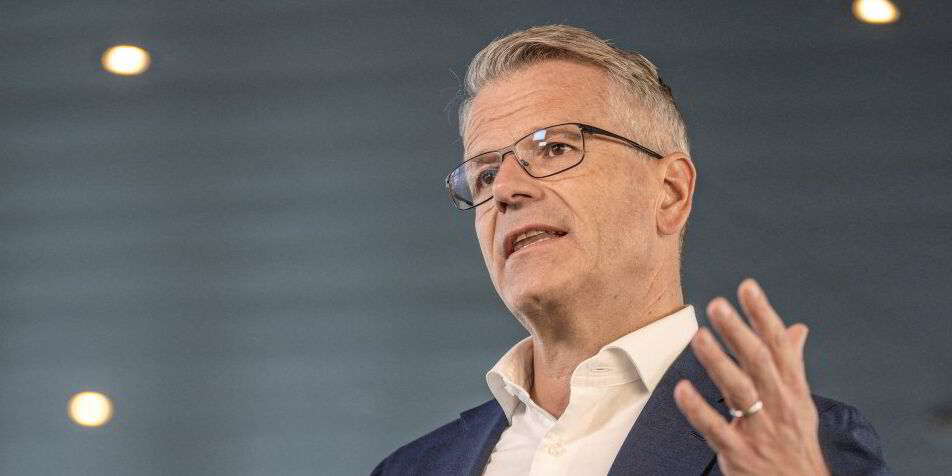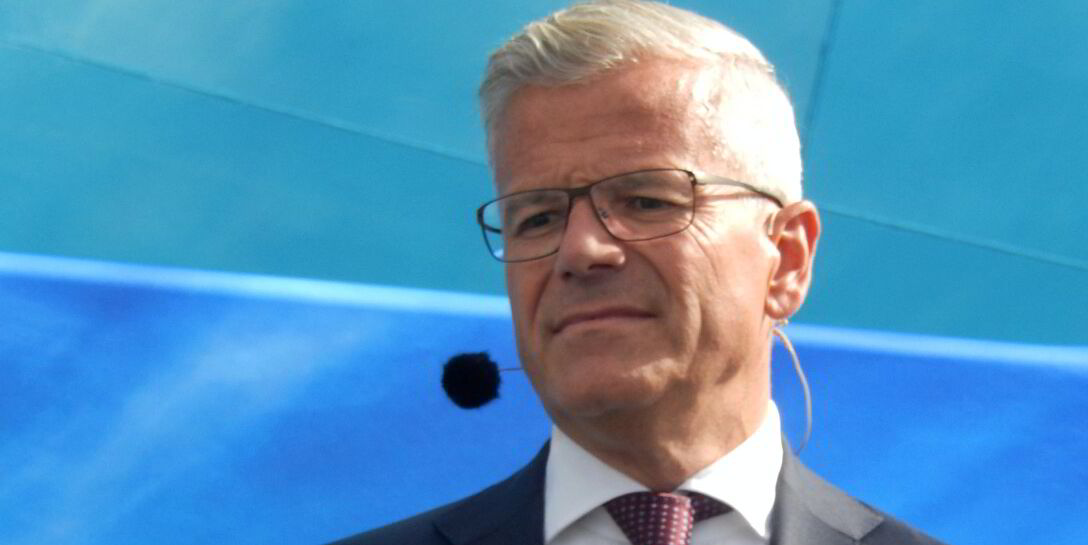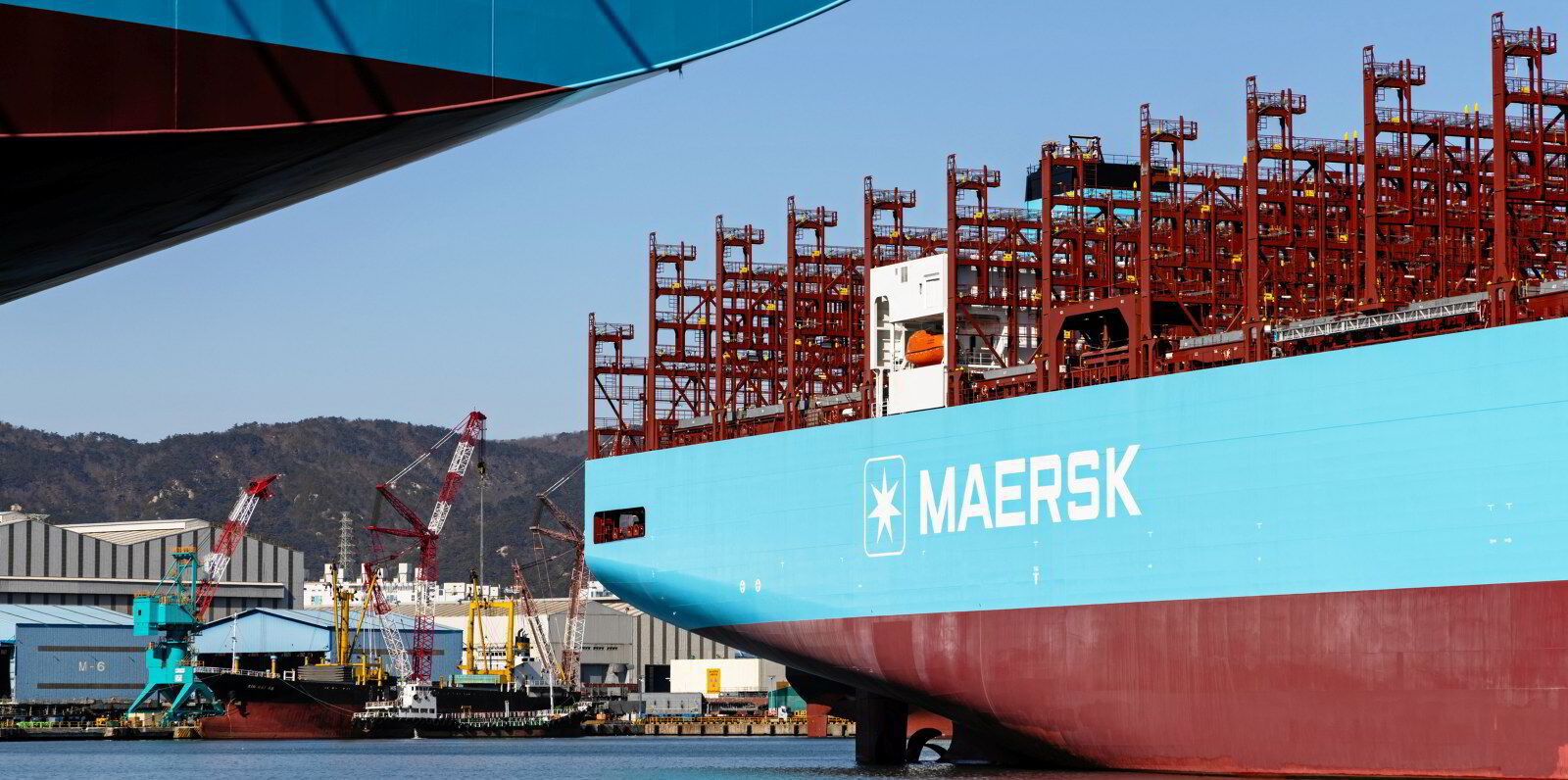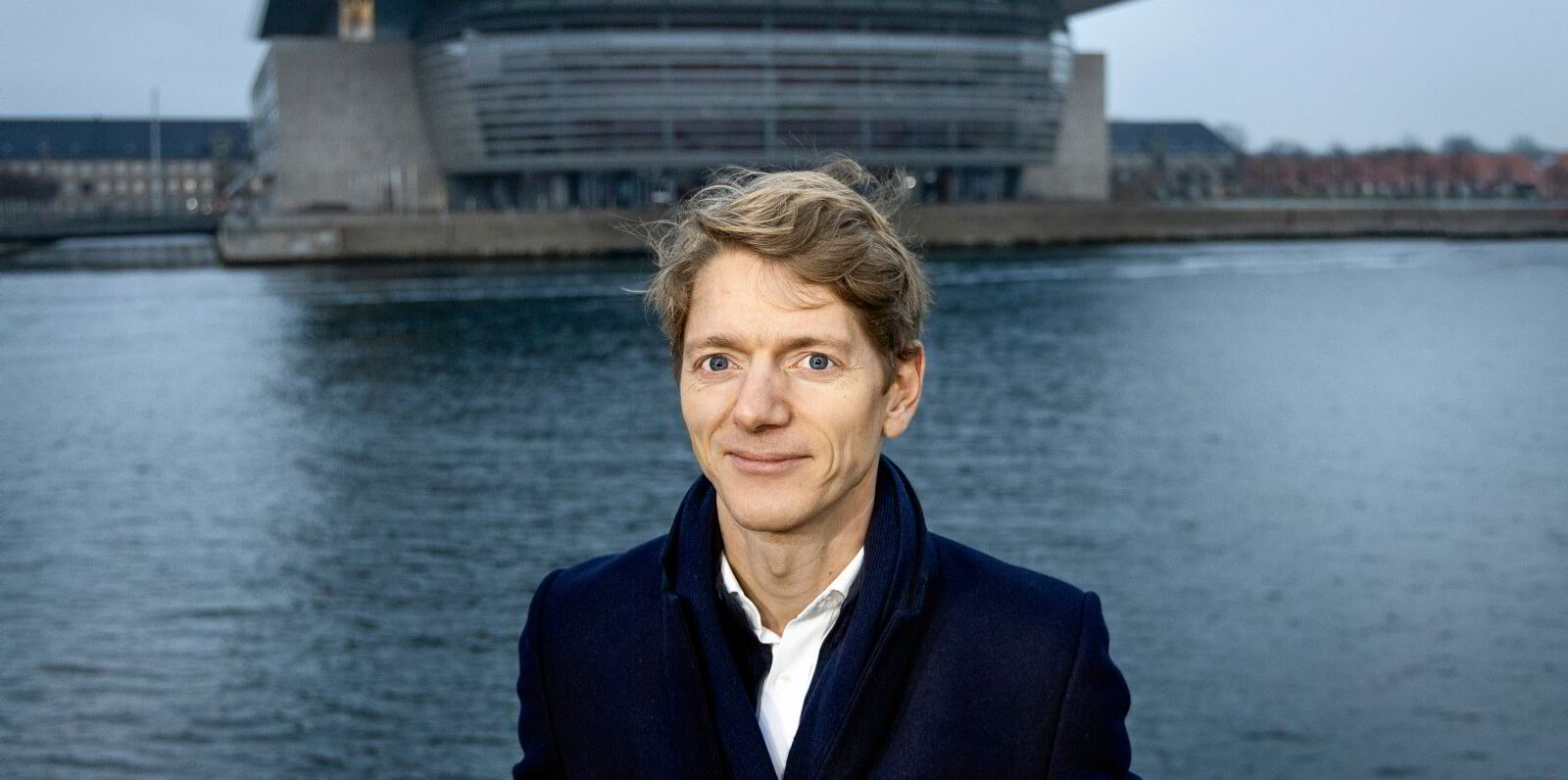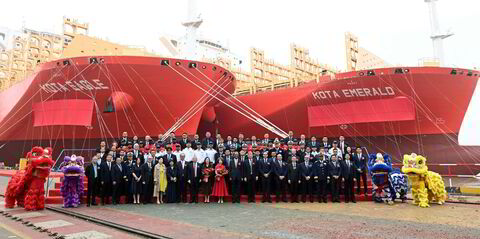Danish shipping giant AP Moller-Maersk is poised to sign a series of up to 32 LNG dual-fuelled container ship newbuildings at three shipyards.
The deals, worth more than $6.6bn in total, come as the company plays catch-up with its first move for LNG-fuelled ships and strives to renew its fleet.
In addition, the shipowner is being linked to a raft of charters for LNG dual-fuelled boxships from at least three tonnage providers that could give it a further 30 ships.
Added to the newbuilding slots secured, this stacks up to 62 vessels in total.
TradeWinds understands that Maersk has agreed terms with South Korean shipbuilder Hanwha Ocean for six 16,000-teu LNG dual-fuelled container ships priced in the region of $220m each for its own account, along with four optional berths.
Locking in 2027 slots
Maersk is believed to have secured delivery slots for the vessels in 2027, with Hanwha Ocean pipping HD Hyundai Heavy Industries in the race for the work.
In China, brokers said Maersk has signed a letter of intent with New Times Shipbuilding for a further six 16,000-teu boxships for delivery in 2028, plus six options.
At Yangzijiang Shipbuilding, the liner company has an LoI for a sextet of similar ships for 2027 handover dates, along with four optional vessels.
All the newbuildings are listed as LNG dual-fuel ships.
A spokesperson for Maersk said: “We do not comment on rumours.”
In July, TradeWinds reported that methanol-fuelling pioneer Maersk had stunned the market by going back on its original decision to bypass LNG as a fuel.
Instead, this publication revealed the company had sent out a highly confidential request for proposals to shipbuilders for a string of 12 container ship newbuildings of about 16,000 teu.
A month later, Maersk chief executive Vincent Clerc detailed that the company had committed to ordering or chartering 800,000 teu of dual-fuel vessels in 2024, which would be delivered from 2026 through 2030.
He said 500,000 teu of capacity is on long-term charter and 300,000 teu is to be owned.
Closing in on orders
Clerc said in August that most of the ships are already ordered or would be inked in the coming weeks.
Among the chartered tonnage, five 16,800-teu LNG-fuelled vessels contracted by John Fredriksen-controlled SFL Corp at New Times are widely referenced in the market as vessels chartered to Maersk.
New York-listed SFL has previously said the 2028-delivering vessels are backed by 10-year charters with a major liner operator for $1.2bn.
Newbuilding and LNG industry sources are now also linking Maersk to charters on a series of six 8,400-teu LNG dual-fuelled vessels ordered at New Times by Greek owner Evangelos Marinakis’ private company Capital Maritime & Trading.
But Canadian tonnage provider Seaspan Corp is expected to be by far the largest charterer to Maersk.
This week, sources were naming the company in connection with at least 19 LNG dual-fuel container ship newbuildings, either on order or to be confirmed, at two yards in China, with the comment that there could be more ships under discussion.
The known vessels are understood to include five 16,000-teu newbuildings at New Times along with 10 of 17,000 teu and four of 9,000 teu at Yangzijiang. All the vessels are for delivery dates in 2027 and 2028.
Maersk’s massive tonnage grab is being seen as the shipowner finally moving to catch up with its peers, many of whom, such as CMA CGM and MSC Mediterranean Shipping Company, have already booked large numbers of LNG dual-fuelled vessels in the previous wave of container ship ordering.
Instead, Maersk focused on methanol as its fuel of choice, contracting 25 boxships. Ultimately it intends to run these on green methanol, but this has proved to be in short supply.
Embracing LNG
But as a second burst of boxship newbuilding action threatens to mop up yard space, Maersk — which is expected to be overtaken by CMA CGM in the liner company size rankings — has opted to dive in on LNG as a fuel.
In August, Clerc assured that Maersk’s new vessels, both newbuildings and chartered tonnage, are part of a programme to deliver 160,000 teu per year and maintain a fleet at about 4.3m teu.
He said this would include the scrapping of older tonnage and would not contribute to overcapacity in the industry.
